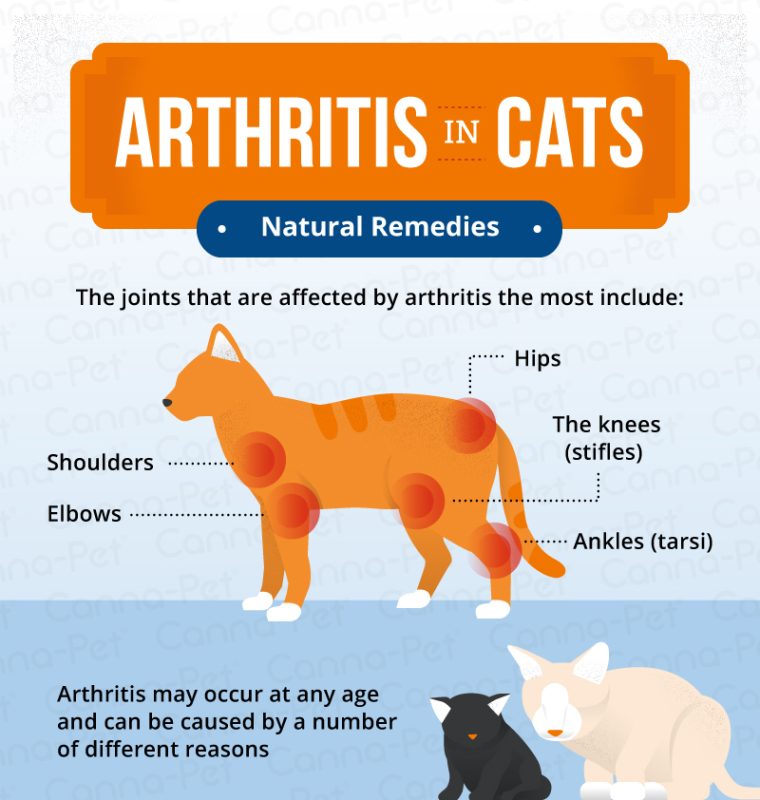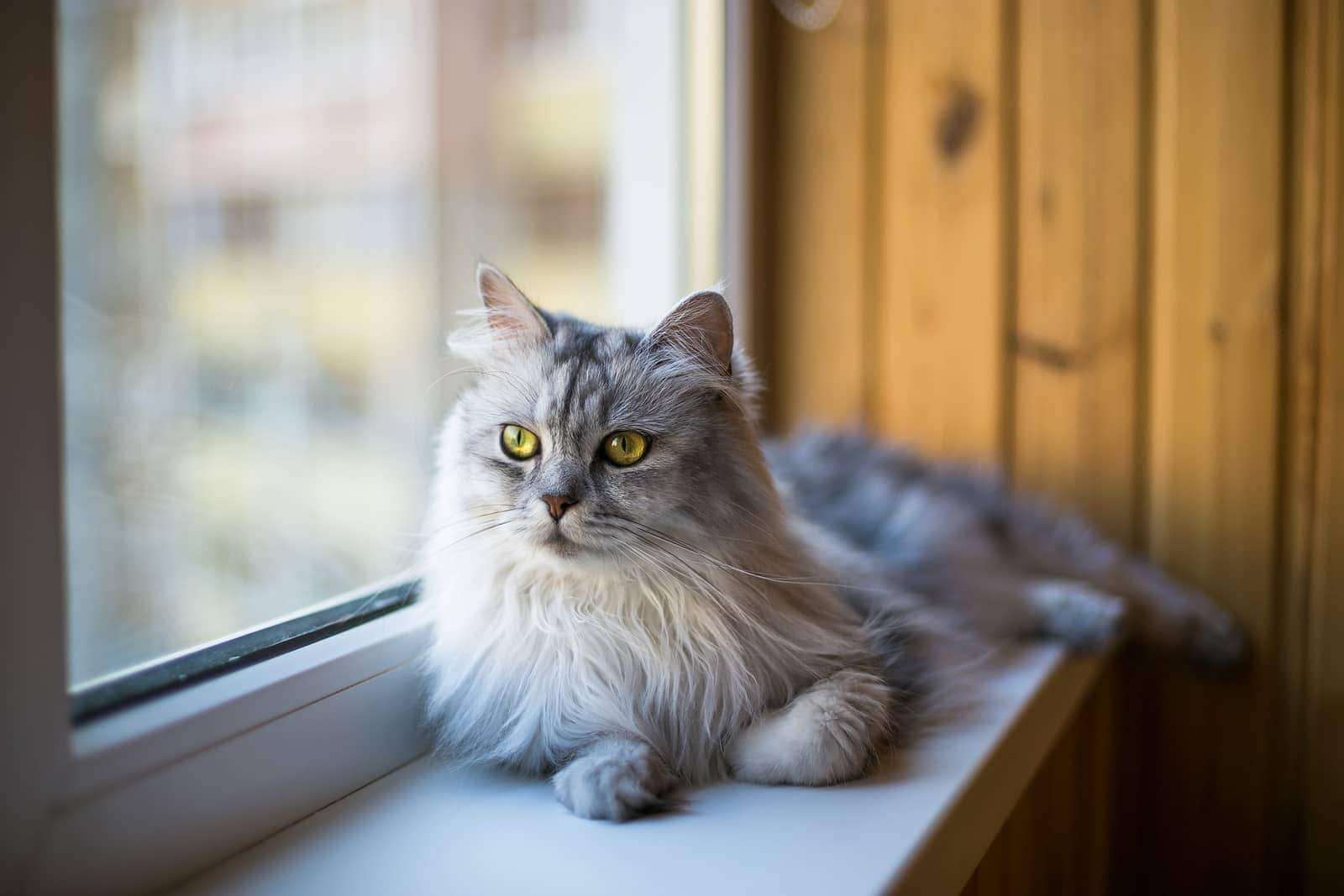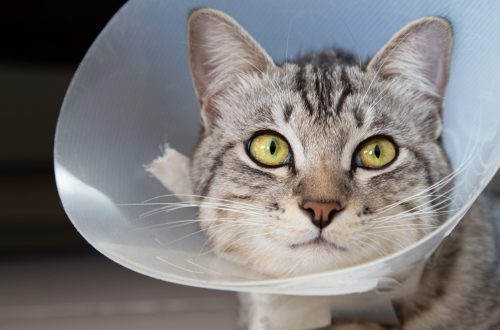
Osteoarthritis in cats: diagnosis and treatment
Arthritis, also called osteoarthritis or osteoarthritis, is a much more common condition in cats than many owners realize. In fact, the vast majority of animals at some point in their lives, usually more often in old age, suffer from this disease.
Knowing about joint problems in cats, owners have the opportunity to provide them with preventive care and support during a difficult period.
Contents
What is osteoarthritis
Strictly speaking, arthritis refers to any kind of inflammation of the joints in cats, whether it is injury, infection, tumor, or immune system disorders. The World Small Animal Veterinary Association notes that the most common form of arthritis in cats is caused by the degenerative aging process, often combined with genetic diseases such as hip dysplasia. This age-related process is called osteoarthritis, although it is also called degenerative joint disease or simply arthritis.
Like humans, arthritis in cats makes their joints stiff and swollen and painful to move. This condition is accompanied by thinning of the articular cartilage – the protective shell of the bones, the accumulation of fluid inside the joint and the accumulation of bone material there as a result of fluid exposure.

How Common Are Joint Diseases in Cats?
Osteoarthritis is a very common disease in dogs, affecting one in five dogs. Therefore, it is dogs that are depicted on information posters dedicated to this disease. Meanwhile, the prevalence of arthritis in cats is alarmingly high, even higher than in dogs, with arthritis affecting 60 to 90% of all cats over 12 years of age.
Osteoarthritis is more common in larger breeds than in others. The ICC reports that Maine Coons are considered prone to arthritis due to their large size and risk of hip dysplasia. Persians and Scottish Folds may also be at higher risk.
Signs of Joint Problems in Cats
Common symptoms of arthritis in cats include:
- joint stiffness after physical activity;
- loss of muscle strength;
- reduced mobility;
- changes in care regimen;
- swollen joints;
- urination and defecation past the tray;
- unexplained aggression or irritability;
- difficulty getting up, climbing, jumping, or climbing stairs;
- increase in sleep duration;
- gnashing in the joints.
The problem with diagnosing joint disease in cats is that osteoarthritis usually develops slowly and cats never show joint pain. Most owners also believe that the common signs of osteoarthritis, such as increased sleep, stiffness when walking, etc., are normal for older cats. Accordingly, many do not take them for signs of the disease. If your pet shows any of these symptoms, you should make an appointment with your veterinarian.
Maintain joint health
In many cases, the treatment of arthritis in cats is quite difficult. If necessary, you should consult with a veterinarian on the development of a weight loss program for your pet. The joints of an overweight animal receive higher loads, which leads to excessive pain.
Medicated cat food for joint health is also essential. It is a balanced diet rich in antioxidants and fatty acids. In addition, supplements such as glucosamine, chondroitin, and fatty acids may be given to the pet if the special therapeutic joint health food does not already include them. There are very few arthritis medications for cats, but you can ask your veterinarian about available options.
It is necessary to adapt the dwelling to the needs of the cat if it already has difficulty with jumping and climbing to heights. Toys, food, and water should be placed within her reach to encourage more movement and keep her muscles healthy. You should also make sure that the litter box for an aging pet has low sides, and that warm, soft bedding is placed in a quiet corner of the house.

Pet health – attention
Since osteoarthritis in cats is genetically determined, there is little that can be done to prevent its development. However, it is possible to delay the onset of symptoms and significantly improve the animal’s quality of life in the long term. The most important thing is to help your cat maintain a healthy weight throughout his life and to identify symptoms of the disease as early as possible in order to provide him with the necessary treatment.
When it comes to early diagnosis of arthritis, regular visits to the veterinarian are the first line of defense. X-rays may reveal characteristic bony growths, swelling of internal joints, and other changes that can be expected in cats with osteoarthritis.
Joints hurt in a cat: prognosis of the course of the disease
If a veterinarian has diagnosed arthritis in a cat, then he has noticed serious evidence of this. Do not ignore his recommendations.
This is a lifelong progressive diagnosis, so ask your veterinarian about treating your cat’s joints and long-term solutions to improve her quality of life in her golden years.
Owners should be aware that osteoarthritis is a serious condition. Just because pets in general rarely show outward signs of discomfort doesn’t mean they don’t need help. It is necessary to regularly and timely visit a veterinarian and take into account all his recommendations.
See also:
Choosing the Right Food for Your Senior Cat Easy Ways to Get Your Senior Cat Moving 10 Tips for Keeping Senior Cats Healthy Cat Care: What to Look for





